Oaxaca is one of the top digital nomad destinations in Mexico and the world. Learn more about living in Oaxaca in this detailed guide.
In 2020, the Digital Nomad world changed forever. Not only was being a Nomad quite challenging as borders closed globally — but even those who had never worked the ‘digital’ lifestyle as a remote worker, were all of the sudden forced to learn how to self-operate from home.
Companies had to adapt, with many realizing that the lower overheads of having their staff work from home is both better for the bottom line, as well as for the morale of their employees.
Now it looks like the digital landscape may have changed forever as a result.
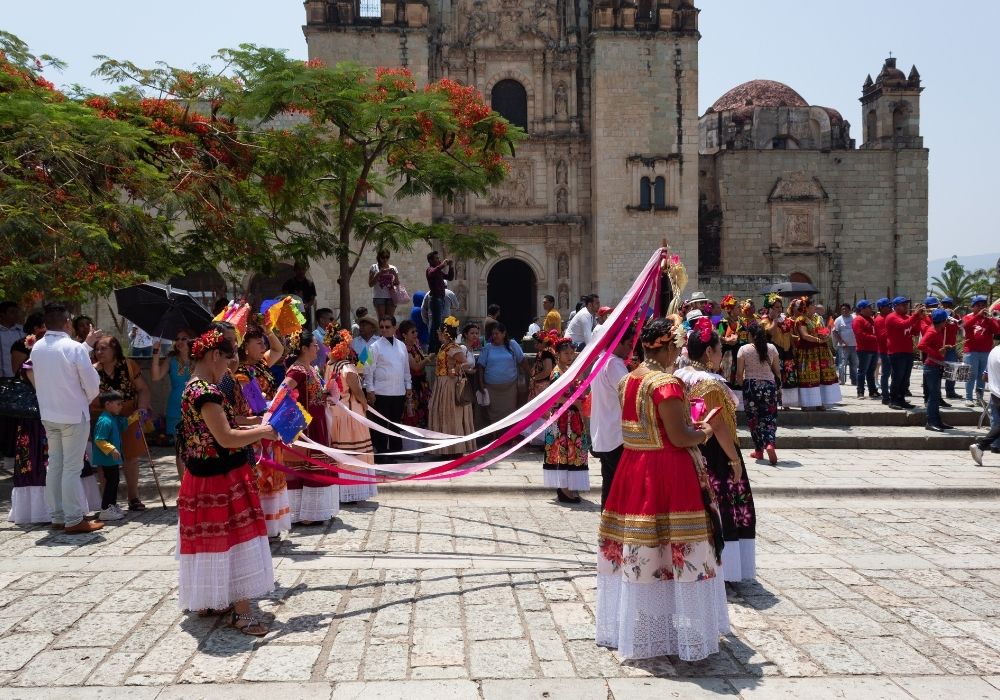
With borders starting to reopen, more and more of the newfound remote workforce will be looking at never-before thought of opportunities to work from abroad — and the Digital Nomad landscape will grow exponentially as a result!
Many cities around the world have already established themselves as “Digital Nomad Friendly Destinations”, with some almost oversaturated with remote workers, such as Chiang Mai, Berlin, Playa Del Carmen and Medellin.
Other Digital Nomad cities have remained havens, off the main radar — yet still teeming with incredible communities. Oaxaca de Juarez in southern Mexico is one such haven for remote workers.
Learn everything you need to know about living in Oaxaca as a digital nomad in this detailed guide.
Living in Oaxaca
I’ve been basing myself as a Digital Nomad in Oaxaca since October 2016.
After living for 5 years in Asia, I came to Oaxaca with the plan of staying for a month around the famous Day of the Dead celebrations before planning to travel around more of Latin America.
Upon arrival, I quickly fell in love with it to the point that I’ve now been living in Oaxaca pretty consistently ever since.
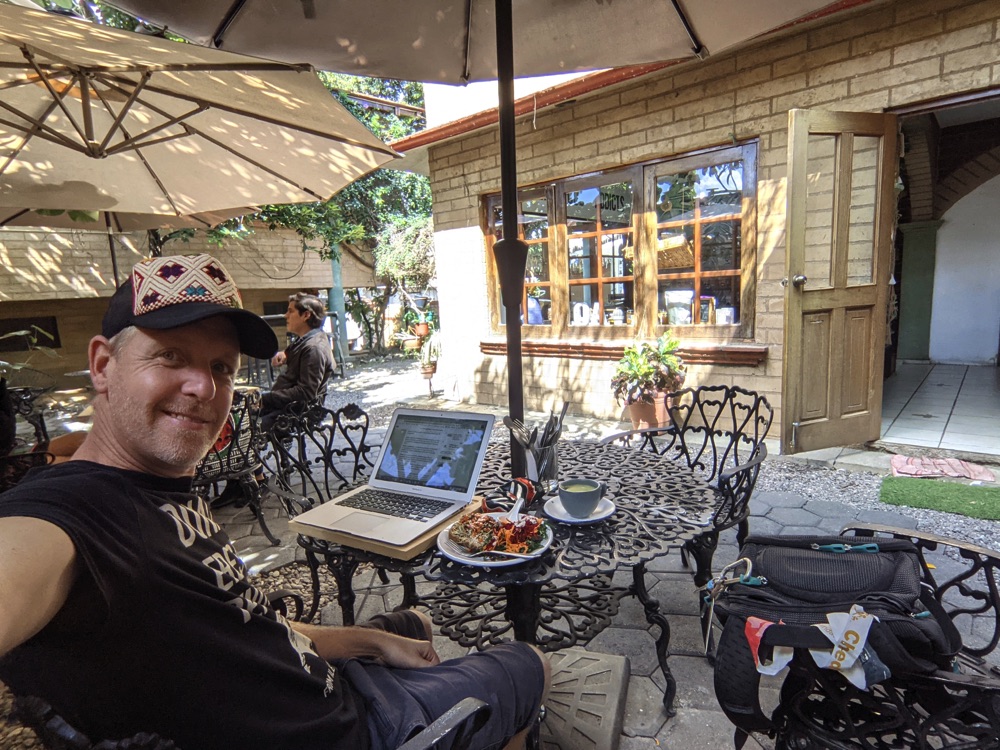
Located 1500 meters above sea level, Oaxaca is a UNESCO World Heritage Site, surrounded by the endless mezcal farms and mountains, with some of the most interesting and unique food in the country, and some of the largest populations of varied indigenous groups remaining in Mexico.
Oaxaca’s vibrancy, colourful buildings, incredibly welcoming and caring locals, great expat community, gorgeous mountain backdrop and international standard cuisine set it apart as being one of my favourite cities, not only in Mexico, but in the world!
What Does Oaxaca Offer Digital Nomads?
Oaxaca is an ideal city for Digital Nomads primarily due to its tight community of remote workers, its affordability compared to other popular Mexican destinations, and tons of amenities to make your stay comfortable
On top of all that, Oaxaca offers easy access to natural and historical sites both inside and outside the city, and of course, it’s local population, which is a mix of the 11 major indigenous groups that populate Oaxaca state.
These indigenous groups bring their own food, textiles, music, festivals and traditions into the mix of the already colourful Mexican culture most are familiar with.
There is a great nightlife scene in Oaxaca, plenty of gyms and yoga studios around the city, and one of the best coffee-shop scenes in all of Mexico. Be prepared to loosen your belt, as the food scene in Oaxaca is known country-wide for being amongst the best!
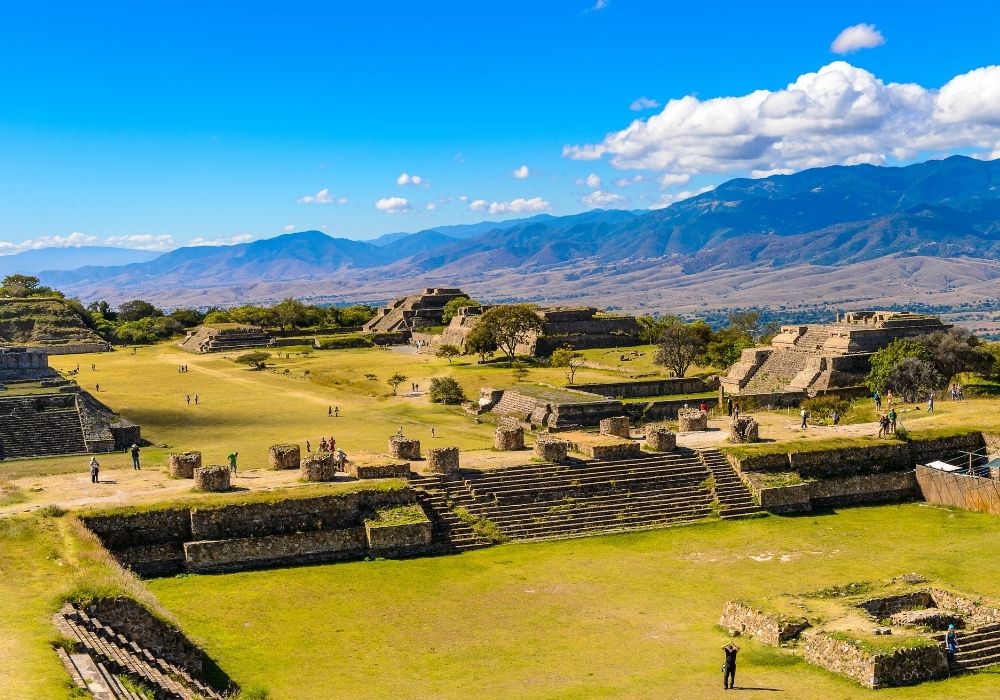
Located high in the mountains, the weather is perfect all year round, without the threat of hurricanes which hit the coastal cities like Cancun and Playa del Carmen. While living in Oaxaca, you can enjoy nature, mountains and forests right on the city’s edge.
Oaxaca truly is a top choice for Digital Nomads who are in-the-know about this beautiful slice of paradise. There are endless things to see and do in Oaxaca to keep you busy.
How to Find Apartments in Oaxaca
There are many amazing places to rent in Oaxaca. They range from long term co-living spaces and basic studios, to deluxe private colonial houses, and even a few modern condos, with everything in between.
The expat community has been continually growing for the past 20 years or so in Oaxaca, and thus makes the rental market a bit competitive.
There are several Facebook groups for housing and rentals in Oaxaca. Often, a place that seems too good to be true will be rented within a few hours of being posted online.
If you are planning on staying in Oaxaca long term, it may be best to just settle with something that has loose commitments, such as a guesthouse, hostel or hotel, as you begin your search.
Understand as well that furnished places are MUCH more expensive than unfurnished. The location will also, as always, greatly influence the price.
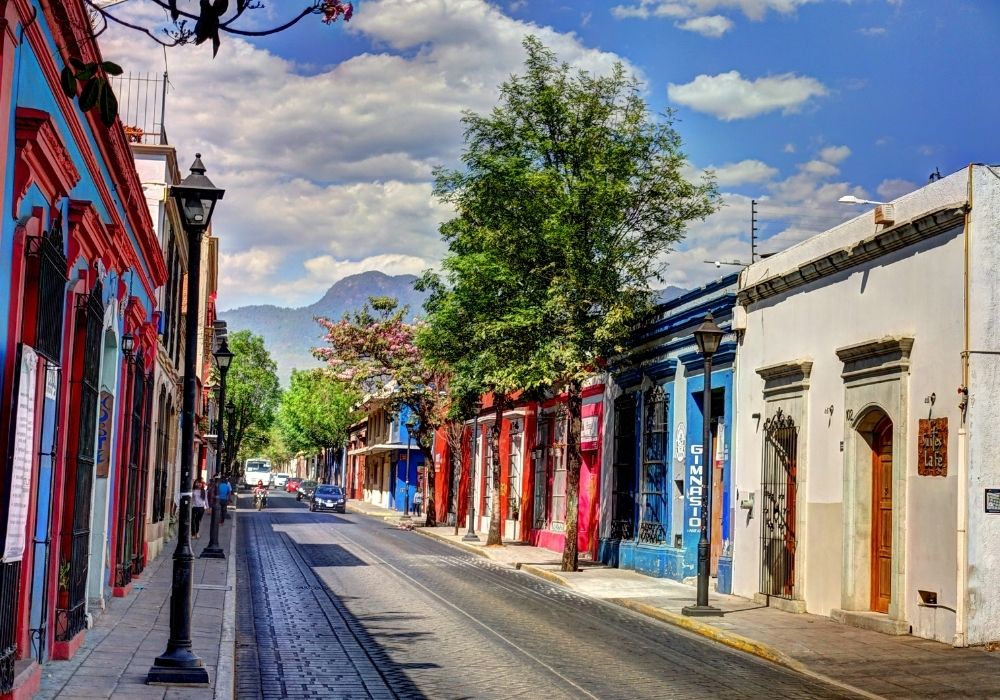
Best Neighbourhoods to Live in Oaxaca as a Digital Nomad
The neighbourhoods which are attracting the most digital nomads right now are Jatalaco, and Xochimilco. Both of these neighbourhoods are located on the periphery of Oaxaca’s historic centre.
They are both trendy, loaded with cafes, beautiful colourful colonial architecture and cobblestone streets, and a short walk into Centro for access to the restaurants, art galleries and studios, bars, and parks.
The average private furnished accommodation in these neighbourhoods ranges between 6000-12,000 pesos/month ($300-600 USD).
You can find apartments easily here either by searching in Facebook housing groups for Oaxaca, by using a real estate agent or simply walking around the streets looking for RENTA signs posted outside.
WiFi Speed in Oaxaca
The only thing that is challenging for some digital nomads is the lack of really fast wifi in most places around the city of Oaxaca. It’s not that it doesn’t exist, but it can be difficult to find.
There is good wifi, but not many cafes or inclusive apartments here have it. Sometimes it is due to infrastructure (no fibre optic cables to that neighbourhood), though usually, it is due to the landlord/owner using a router from 1997, or simply subscribing the cheapest internet package.
I have experienced wifi as bad as 0.8 MBS, in a Selina co-working space, no less. I have also seen it as fast as 150 MBS in a coffee shop, and 250 MBS in Convivio co-working space.
Housing rentals connection speeds vary greatly too, from the low end of 2MBS being the slowest to about 30 MBS as the fastest I’ve experienced in a home. The average would be closer to about 16 MBS for homes.
If infrastructurally possible, you may be able to negotiate a faster connection at home, but that’s not always available.
WiFi in Oaxaca is generally a solid connection, though I have seen fluctuations over the years… especially around April, 2020, when EVERYONE was at home watching Netflix! It was pretty slow that month. Let us never speak of that month again.
Co-working Spaces in Oaxaca
There are three main co-working spaces in Oaxaca.
Convivio Oaxaca
Convivio Oaxaca is a long-standing staple in the Oaxaca Co-Working scene.
Not only was it one of the first co-working spaces here, but it also boasts the fastest WiFi in the city by a long shot, a solid community of co-workers, live music on weekends, a restaurant serving #Oaxasian fusion food, and a bar mixing up some incredible cocktails.
Their membership also gets a slew of discounts to the aforementioned, as well as free coffee, tea, and mezcal! Costs range from 200 pesos ($10 USD) day passes to 1750 pesos ($90 USD) monthly passes. Convivio is located conveniently in the heart of Centro.
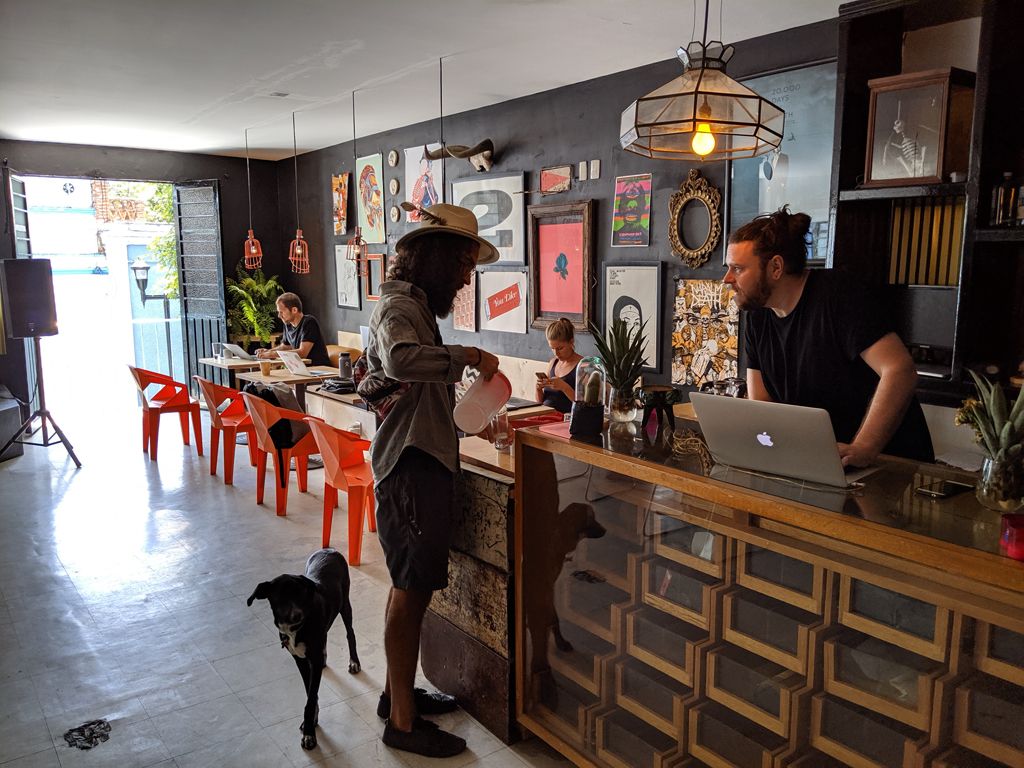
Work Coffee Inc.
Work Coffe Inc has become a popular co-working space for locals. There is a cafeteria on the ground floor which is where the co-working space is located. They have a private corporate meeting room with a tv screen, and seating for up to 8 people available for rent.
Work Coffee Inc occasionally has private offices open up for rental ranging between 4-5000 pesos/mo ($198 – $250), though based solely on the vacancy of current tenants.
Their internet ranges from 50-100 MBS depending on the package you buy with them. General co-working prices start at 100 pesos ($5 USD) per day, and upwards of 850 pesos ($45 USD) per month, though may come with some limitations, such as limited time or access to facilities.
Selina
Selina is the most well-known chain of co-working spaces in Mexico, and has a location here in Oaxaca. Its main attraction is a rooftop bar, and co-living hotel and door rooms.
There is a restaurant and common area for co-working, though they seemed to have forgotten that digital nomads need wifi to do that too, with some of the slowest wifi in the city (often clocked below 2MBS).
Day passes here start around 200 pesos ($10 USD) up to 2000 pesos ($100 USD) for a general pass, or 4250 pesos ($215) for a dedicated desk. All passes include access to wifi, coffee and meeting rooms. Selina is located just 2 blocks from Convivio, in the heart of Centro.
What is the Cost of Living in Oaxaca?
You could easily live in Oaxaca for between $1200 – 1400 USD per month, all in, and live VERY comfortably.
Oaxaca is one of the best budget options for being a digital nomad in Mexico. Being one of the poorest states in the nation, the average cost of day to day living is incredibly low — having foreign money to spend here helps raise the standards of living for many.
If you are on a tighter budget, it’s easy to find delicious local food for 0.50 cents (10 pesos) per taco, or $1 (20 pesos) per torta/sandwich. That said, you can also splurge at some high-end fine dining of International standards for up to $100 USD.
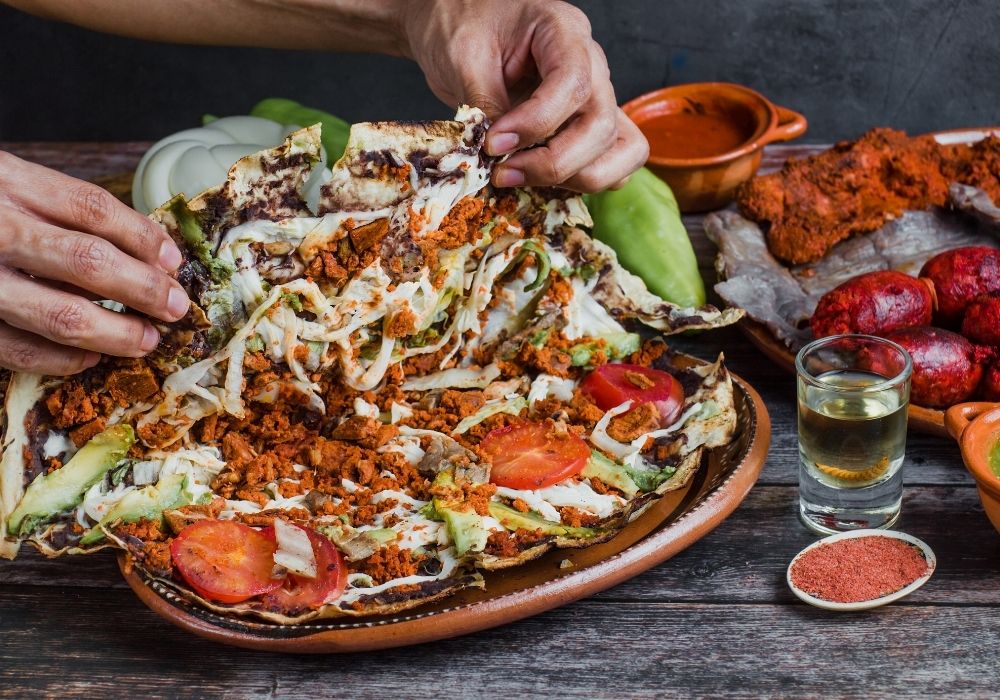
Accommodation, even on the higher end, is half that of a place such as Playa del Carmen or Puerto Vallarta.
Rentals range anywhere between 3000 pesos ($150 USD) to 20,000 pesos+ ($1000 USD+) per month, depending on neighbourhood, size, amenities and inclusions.
The average for a private, centrally located furnished apartment in Oaxaca is around 8,000-10,000 pesos ($400-500/mo).
The average monthly cost of living in Oaxaca for most digital nomads sits somewhere comfortably in the middle, with slightly nicer accommodations, a mix of local and international cuisine, occasional day trips out of the city and some nights out on the town.
Pros and Cons of Living in Oaxaca as a Digital Nomad
As with anywhere, while there are many pros to living in Oaxaca, there are some downsides as well.
Some of the biggest pros of being a digital nomad in Oaxaca City are:
- Oaxaca is a gastronomical paradise, with some of the best and most diverse food in Mexico!
- It’s one of the prettiest and safest towns in the world
- It’s walkable and packed with places to go and things to do
- It’s got an amazing expat and remote working community
- The locals are some of the kindest, humble and welcoming people you’ll ever meet
Some of the cons and things to be aware of in Oaxaca City are:
- Oaxacans are passionate people, and as such, it’s not uncommon to see protests or disruptive street blockades, though very rarely are they anything less than peaceful
- Though very safe, Oaxaca is a poor state, so petty crime such as pickpocketing does exist
- It’s far from the beach (6+ hours by land, or 30 mins by air) — however, the surrounding mountains make for a gorgeous backdrop
- Due to rapid growth in exposure and popularity (Travel & Leisure just voted it #1 city in the WORLD to visit ), it runs a high risk of growing without solid infrastructure. Visit responsibly, and try to shop and support locally, and keep things sustainable.
What is the Visa Situation for Mexico?
Visa situations are different for everyone, and it’s best to check with your local embassy for your nationality’s restrictions. That said, most visas (either applied for in advance, or a Visa on Arrival) are for 6 months, and are free. This makes for one of the best visas in the world.
If you really fall in love with Mexico (which is almost a guarantee), getting a temporary or permanent residence isn’t too hard either, as long as you have a steady income and some savings in the bank.
Is Oaxaca Safe?
Yes, Oaxaca is safe to visit.
One of the most frequent questions people ask when visiting a new destination is whether or not it’s a safe place to go. Oaxaca is amongst the safest cities in Mexico, though it is not without occasional petty crime.
The people of Oaxaca are hospitable by nature, and are proudly sharing their unique culture with the world. Keep in mind, Oaxaca is also one of the poorest states of Mexico, and so there is some homelessness and desperation amongst some.
So, is Oaxaca safe? Overall, Oaxaca remains one of the safest destinations for visitors. Just keep in mind you’re in a foreign country, and in a region which is poor, so don’t flaunt money or valuables carelessly.
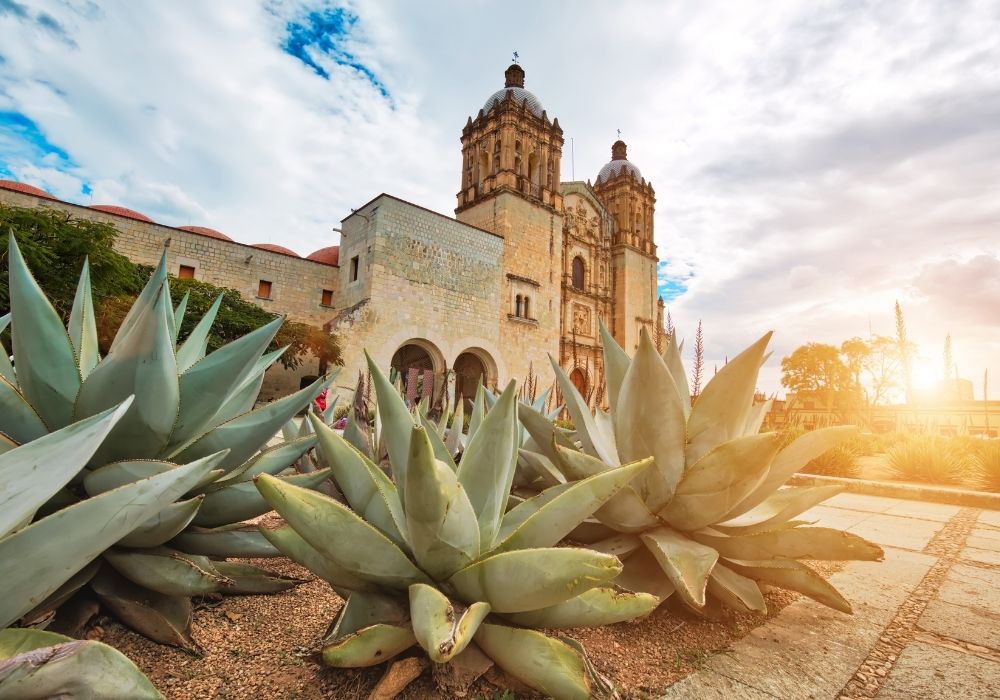
Avoid Pickpocketing in Oaxaca
Like most countries, if you are in a busy market, or in a crowd such as watching a parade or concert, it is possible that you might get pick-pocketed. It is always best to be mindful of your valuables and keep wallets or phones in your front pockets or in a money belt.
Don’t carry around all your valuables with you, and always try to leave one of your bank/credit cards at the hotel in a safe, should you lose one, at least you’ll still have another way of accessing your funds.
Walk Away from Protests
The citizens of Oaxaca are also very proactive and vocal about politics and human rights issues, leading to occasional protests or blockades (the blockades are infamous for disruption of traffic).
Though I have never seen a protest be anything more than peaceful here, it is always best to try and avoid them if you see one happening, and simply walk the other direction.
Cartel Activity
There actually is a cartel in Oaxaca state, as with most regions in Mexico, though their presence and activity are invisible to tourists.
The cartel in Oaxaca are not aggressive nor have violent outbreaks, especially around the city or touristic regions, as you may read about in Quintana Roo or Sinaloa.
Support the Community to Assist with Poverty
Do your best to support the local economy by shopping locally as much as possible, be mindful of your surroundings, and most of all, enjoy this lovely city and the kindness and humbleness of the people who will be hosting you here.
Conclusion
I hope this guide helps give you the basics for figuring out if Oaxaca is a city from which you want to be based as a digital nomad. Just be forewarned, once you do decide to live in Oaxaca, it’s likely you’ll never want to leave!
The post Digital Nomad Guide to Living in Oaxaca, Mexico appeared first on Goats On The Road.
![]()



Recent Comments